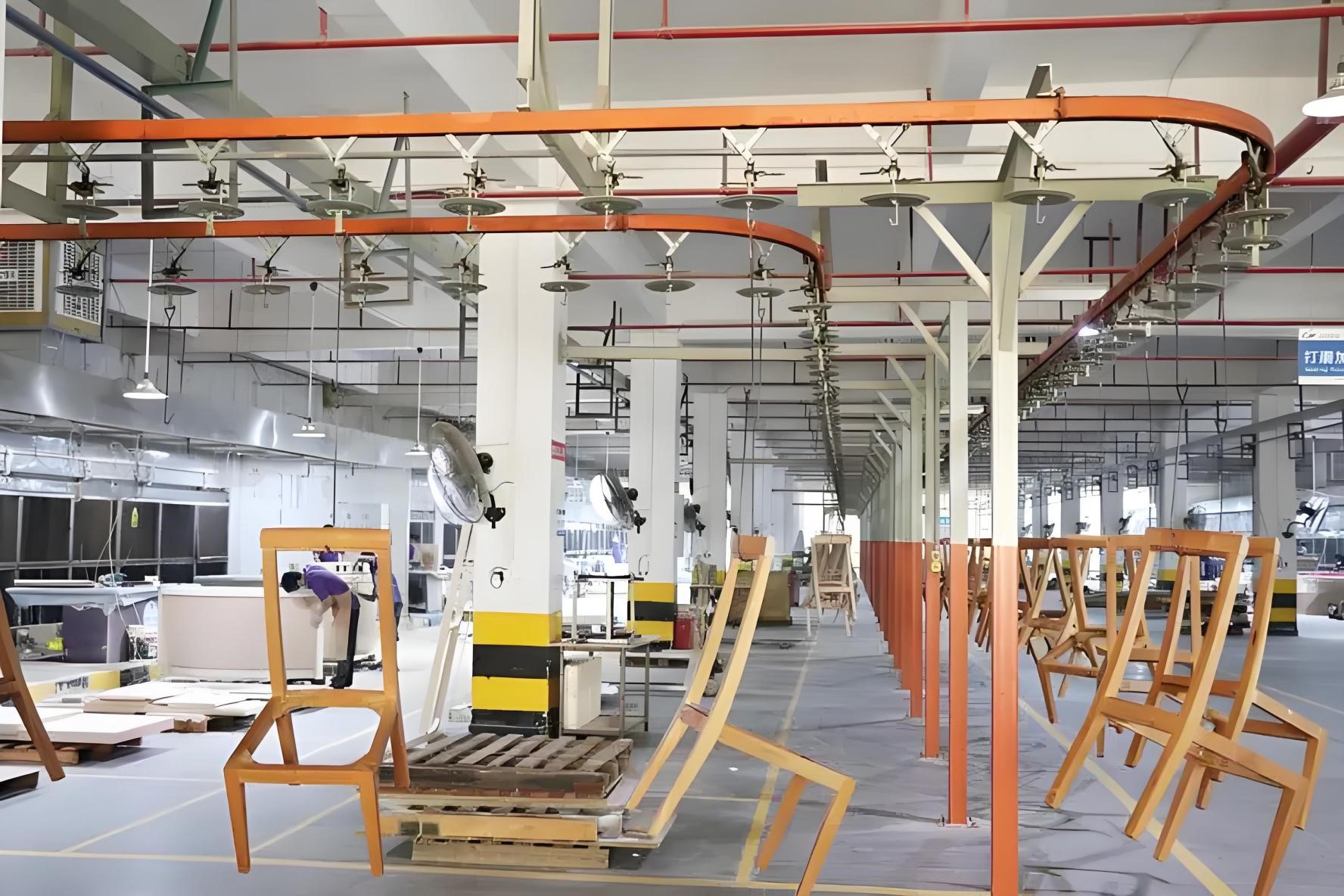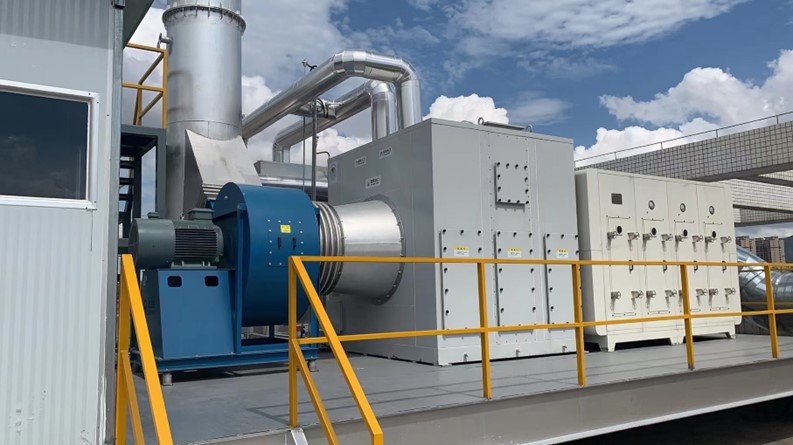
1、 The principle of processing
The principle of paint exhaust gas treatment engineering is based on the comprehensive application
of physical, chemical and biological methods.
The organic solvents and paint mist particles in the exhaust gas are converted into harmless substances
or recycled through the steps of pretreatment, adsorption, decomposition and combustion.
1-1. Pre-treatment
Usually using spray washing tower and other methods,the use of water or other solvents in the waste
gas of paint mist particles,water-soluble substances such as the initial purification.
Through the water curtain formed by high-pressure spraying, the spray scrubber adsorbs the particulate
matter and some organic matter in the waste gas to achieve the goal of preliminary purification.
1-2. Adsorption
Pre-treatment of waste gas into the adsorption device,such as activated carbon adsorption tower.
Activated carbon can effectively adsorb VOCs (volatile organic compounds)such as organic solvents in
exhaust gas because of its large specific surface area and excellent adsorption properties.
The activated carbon adsorption method is a common technology in the treatment of paint exhaust gas
because of its high
efficiency and stability.
1-3. Decomposition and combustion
For adsorption-saturated activated carbon,can be processed through desorption regeneration
and catalytic combustion technology.
The catalytic combustion device uses catalyst to reduce the combustion temperature of organic matter,
so that VOCs in the exhaust gas can be completely oxidized at lower temperature and converted into
non-toxic carbon dioxide and water vapor.
This process not only purifies the waste gas, but also realizes the energy recovery and utilization.
1-4. Biological treatment
For low concentrations of organic waste gas,can also be used biological purification.
The biofilter utilizes the degradation of microorganisms to transform the organic matter in the
waste gas into harmless substances.
The method has the advantages of low operation cost and no secondary pollution,and is suitable
for treating spray paint waste gas with low concentration and high air flow.
2.The process flow
Spray paint waste gas treatment projects usually use a combined process to ensure the treatment effect.
Common Process Combinations include spray washing pretreatment,dry high efficiency filtration, activated
carbon adsorption concentration and catalytic combustion.
2-1. Spray Washing Pretreatment
Through the spray washing tower to remove paint mist particles,
water-soluble substances in the waste gas, for the subsequent treatment to provide a clean source of waste gas.
2-2. Dry high-efficiency filtration
The use of high-efficiency filters (such as HEPA filter) to further remove small particles in the exhaust gas,
to ensure the cleanliness of the exhaust gas.
2-3. Activated carbon adsorption concentration
The use of activated carbon adsorption tower adsorption of VOCs in waste gas,organic enrichment
and concentration.
Regular replacement or regeneration of activated carbon,in order to maintain the treatment
effect of equipment.
2-4. Catalytic combustion
Adsorption of saturated activated carbon regeneration,through catalytic combustion technology
will be VOCs into carbon dioxide and water vapor.
This process not only purifies the waste gas, but also realizes the energy recovery and utilization.
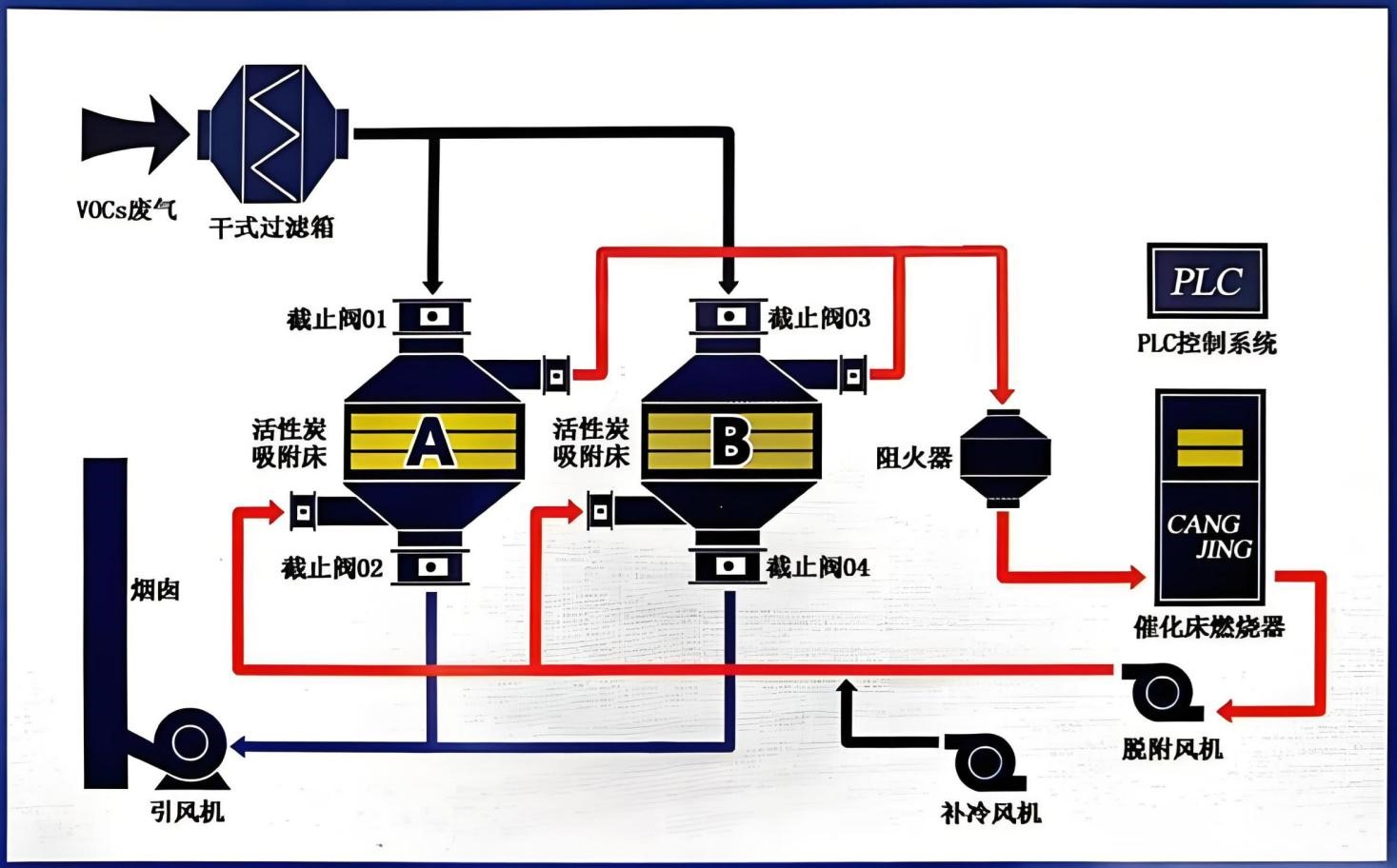
3、Components
Spray paint waste gas treatment project mainly consists of the following parts:
3-1.Exhaust gas collection system
Optimize the design of the spray booth to ensure that the exhaust gas can be effectively collected
and piped to the treatment system.
3-2. Pre-treatment device
Including spray washing tower and other pre-treatment equipment,used to remove paint mist particles
in the waste gas, water-soluble substances, etc...
3-3. Adsorption device
Such as activated carbon adsorption tower,used for adsorption of VOCs in exhaust gas.
3-4 .Catalytic combustion device
Used to treat adsorption of saturated activated carbon,VOCs into non-toxic carbon dioxide and water vapor.
3-5.Control system
Including PLC control system, on-line monitoring system,used to monitor the operation of equipment
and waste gas treatment effect.
3-6. Auxiliary equipment
Such as fans, pumps, valves, etc. ,used for the delivery of waste gas, spraying liquid circulation.
4、Applicable Fields
Spray paint waste gas treatment engineering is widely used in the following fields:
4-1. Automobile Manufacturing and maintenance
The automobile manufacturing and maintenance process needs a lot of spray painting,the exhaust
contains a lot of organic solvents and paint fog particles,causing a serious impact on the environment.
4-2. Furniture production
Furniture production in the spray paint link is also one of the main sources of exhaust gas.
The environmental pollution in furniture production can be effectively reduced by spray painting
waste gas treatment project.
4-3. Machinery Manufacturing
The machinery manufacturing industry in the paint job will also produce a lot of waste gas.
The treatment of these exhaust gases is of great importance to the protection of the environment and
the health of employees.
4-4. Other industries
Such as electrical equipment, home appliances,shipping and other industries in the paint job will
also produce waste gas,the need for effective treatment.
5、Actual cases
The following is a spray paint exhaust gas treatment project solution:
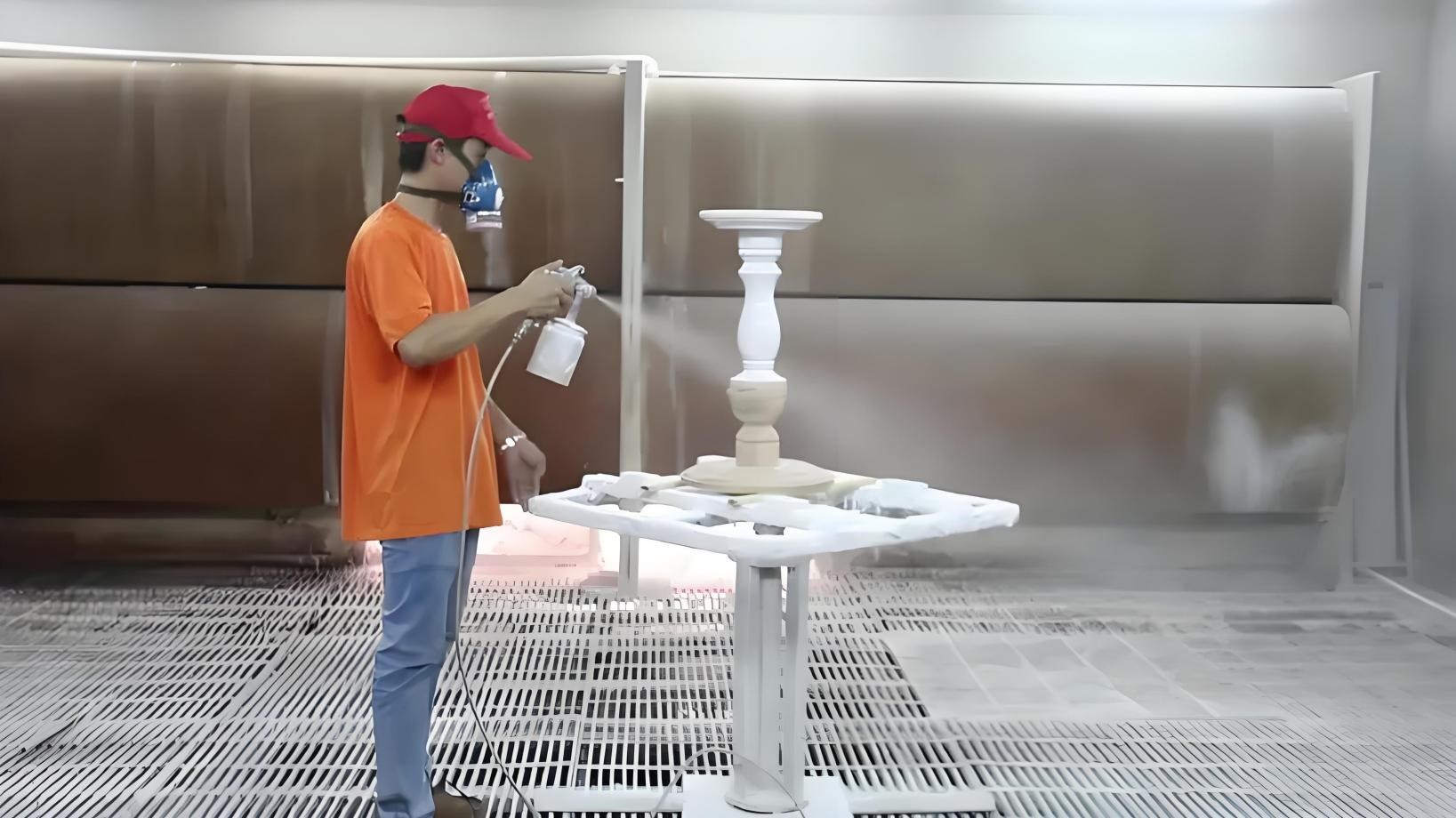
Background
A furniture factory in Foshan City, Guangdong province is faced with the problem of a large amount
of paint fog and organic waste gases, which threaten the health of employees and the surrounding environment.
6、Governance
6-1. Exhaust Gas Collection
Optimize the design of the spray booth to ensure that exhaust gas is effectively collected and piped
to the treatment system.
6-2. Pretreatment
The spray scrubber is used to remove paint mist particles and some water-soluble substances in the waste gas.
6-3. Dry filtration
The use of high-efficiency filter to further remove small particles in the exhaust gas.
6-4. Activated carbon adsorption
The use of activated carbon adsorption tower in the waste gas adsorption of VOCs (volatile organic compounds)
to achieve efficient organic removal.
The tower is designed with multi-layer activated carbon layer to increase adsorption area and efficiency,and
equipped with automatic monitoring and alarm system to ensure the best adsorption effect of activated carbon.
6-5. Catalytic combustion
For adsorbed saturated activated carbon,VOCs are released into the catalytic combustion device through
an automatic desorption system.
The high-efficiency catalyst in the catalytic combustion unit can completely oxidize VOCs to CO2 and H2O at
lower temperature and release a lot of heat energy.
These heat energy can be recycled for preheating exhaust gas or heating,thereby realizing the recycling of energy.
6-6. Automatic Control
The whole management system adopts PLC automatic control system to realize remote monitoring,
automatic adjustment and fault alarm.
Through on-line monitoring system real-time detection of pre-and post-treatment of waste gas indicators
to ensure that emissions meet national and local environmental standards.
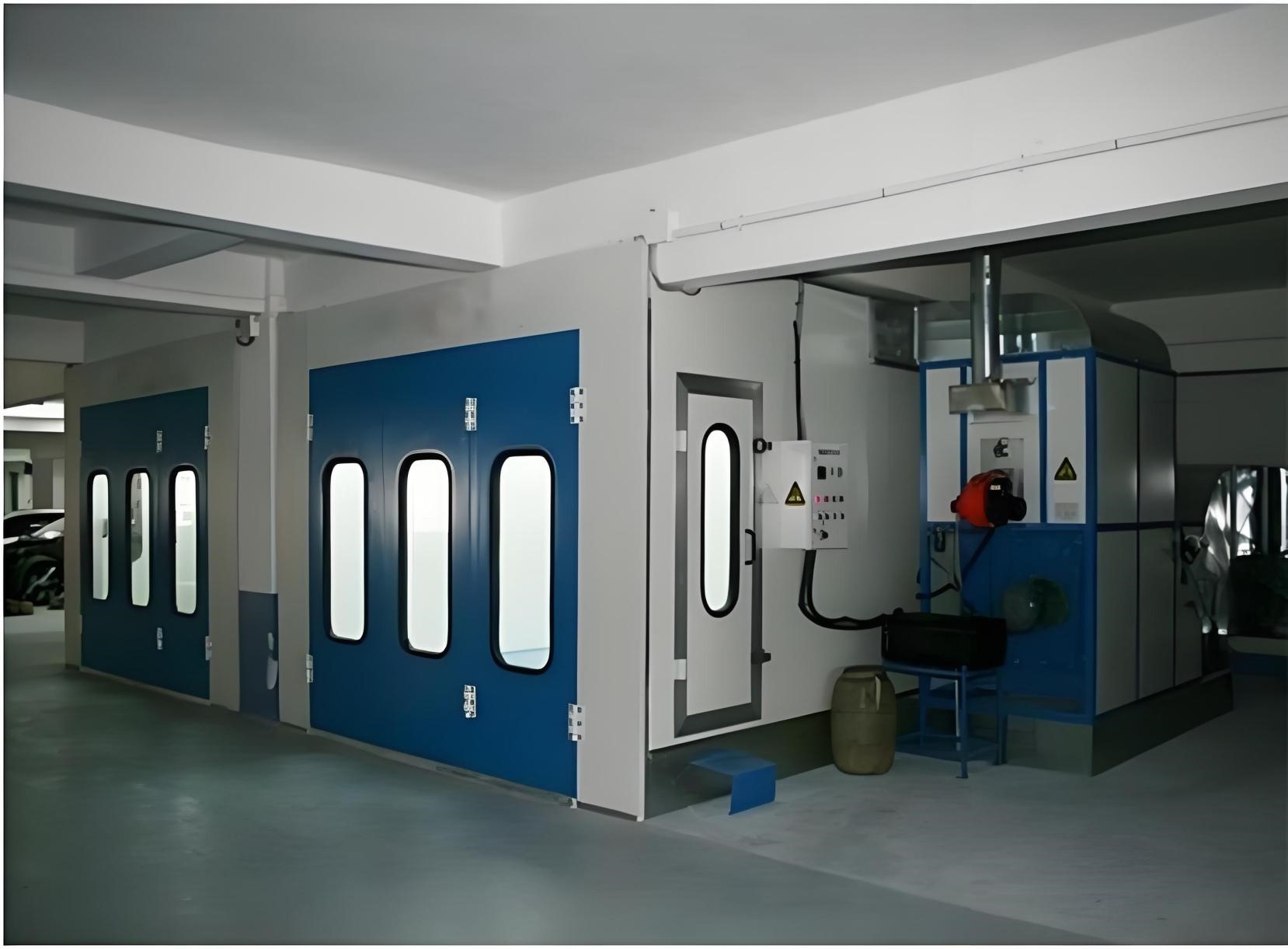
7、Effectiveness:
After the implementation of the paint exhaust treatment project,the quality of the gas emission from
the paint shop of the furniture factory has been greatly improved.
Spray scrubber and high efficiency filter effectively remove the particulate matter in the exhaust gas,activated
carbon adsorption tower and catalytic combustion device to ensure the efficient removal of VOCs.
The monitoring data showed that all the indexes of treated exhaust gas were below the limit of national emission
standards,which greatly reduced the pollution to the environment.
In addition, the implementation of the governance project has also brought economic benefits.
The thermal energy recovery function of the catalytic combustion device has significantly reduced
the energy consumption cost of enterprises,at the same time, it reduces the risk of environmental fines
and production stoppages for non-compliance with emission standards,improves the working environment
of employees and reduces the risk of occupational diseases caused by long-term exposure to harmful emissions.
